I’ve been watching a bit of online kerfuffle set off by a comics creator of days gone by posting some circulation figures for books that he had written in the mid-1980s. This has led to all of the usual figures lamenting the diminishment of the comic book field, and how everything was way better when they were young and comics were written or drawn or produced or distributed in some different way. And that’s fair up to a point. Everybody’s got nostalgia, especially in this hobby. Everybody remembers the thrill of finding some new and unexpected treasure on a comic book rack someplace. The problem comes, at least for me, when people start to use these arguments as a cudgel against the present. It’s particularly galling when such sentiments come from people who have toiled in this field before and who should understand better than anybody how this business and this industry actually works from the inside out, but who let some degree of disillusionment over not being young and vital in the field anymore or merely wanting to revisit old triumphs pull them into trashing the field of today and its practitioners.
Because here’s the thing: things are always tough. Those sales figures from the 1980s, decades ago? When those numbers were reported, people lamented the fact that, two decades earlier, in the 1960s, comics used to sell a lot more than that! Cut to twenty years previous and publishers and creators are concerned, because twenty years before, comics used to sell way better than they do at that time. And so on and so on. Comics: Dying Since 1935. (I’ve been meaning to have that phrase put into a T-Shirt.)
Correlation isn’t causation, and while we can certainly learn from the greats in the field and the things that found success in the past, the key to reaching audiences today isn’t to put out the same sorts of comic books that we did twenty, forty or sixty years ago. That’s analogous to arguing that television programs would all pull in a way larger audience if we went back to black and white, because in the days of black and white television, every program drew in millions more viewers. That only takes a portion of the situation into account. No, change is inevitable, and to be successful, you need to move with the times, trying new things but remaining true to your core values. Too much looking backwards, and you’re going to start bumping into trees as you walk.
So looking ahead, let’s dive into the assorted questions posed by the peanut gallery this week:
Tom Galloway
I forget just where, maybe in the John Ostrander written series, but I'm pretty sure that at some point in the modern age it was established that the Spectre's outfit only consists of the green cowl, cape, trunks, gloves, and booties, with all the rest being his dead white skin rather than a white bodysuit as previously assumed.
John may have addressed this somewhere during his lengthy run on the Spectre, Tom, but it was hardly a new revelation. While you may have interpreted matters differently, the Spectre’s been going around bare-chested and bare-legged since his debut in MORE FUN COMICS #52 in 1940. Bodysuit not included.
Chris Sutcliffe
You mention that to break into comic writing, you don't have to write comics, necessarily. You mention Landy coming from prose fiction. Do you find any trends when writers from other areas write their first comic? For example, do novelists write more than what you'd need for a comic strip, or do screenwriters struggle to describe things to an artist (both arbitrary examples). How much work do you do to help to get their writing into "comic" shape? And does Marvel have guidelines for these writers for what a script should look like?
There is often a period of adjustment when writers come into the field from other areas as you describe, Chris, as they are often used to the particular restrictions and demands of whatever medium they’re used to working in. For screenwriters and the like, that’s often a question of internalizing the fact that you don’t have sound (or actor’s voices) or movement, and that dialogue and copy takes up space rather than time. And yes, we do have a document that was put together by one of our editors, Sarah Brunstad, with some helpful guidance and suggestions. But it’s lengthy and it would make a good Behind The Scenes segment. So I’ll try to get to that over the next couple of weeks—but remind me if I slip up on it, will you?
Grant
Hola Mr. Brevoort! Are you familiar with Record Store Day? If not: https://recordstoreday.com/CustomPage/614
As someone in the marketing field, I have tons of ideas + thoughts about what the comic book industry and retailers could do to augment the existing model of 'Free Comic Book Day', or start something new altogether. What are your thoughts?
I appreciate your enthusiasm, Grant, but if you’re talking about steps that retailers could take, you’re best advised to speak directly with those retailers themselves. An organization like ComicsPro might be better able to act upon any ideas you might have, and would be better positioned to understand why something that you might be proposing wouldn’t actually work the way you feel it might. Sorry to pass the buck like this, but Marvel’s involvement in something like Free Comic Book Day mainly just boils down to creating the material that we’re going to make available for that occasion.
Taimur Dar
According to Dwayne, apparently he was forced to write Misty Knight out of his DEATHLOK series because John Byrne was using the character in his NAMOR book.
That sounds about right, Taimur, at least in a general sense. Certainly John Byrne did use Misty Knight in his NAMOR run. But that wouldn’t necessarily mean that Dwayne couldn’t have continued to use her in DEATHLOK. Although, to be fair, Dwayne and John did have a bit of a dust-up over his SHE-HULK project, so they weren’t all that friendly at that time.
Jeff Ryan
You mentioned that you weren't much of a Punisher guy: that got me thinking. It of course matters if writers and artists like their subject matter, but does it mater if editors do? Could an editor do a credible job on, say, Silver Surfer if they never got the character's appeal, but the creative team did?
Well, sure, Jeff. An editor doesn’t need to love the specific genre or subject matter that they’re working on, but they do need to understand what it is that other people like about those characters or stories. If you’re going to edit for one of the mainstream publishers, the fact of the matter is that you’re going to wind up working on a lot of stuff that maybe doesn’t appeal to you so much. The editors who survive and thrive are the ones who can find something about the material that engages them, and who can decode what about it is appealing to the audience that dos like it.
Kyle Evans
In a previous question, someone mentioned that they were reading every Spider-Man appearance in chronological order. I've always enjoyed coming up with 'reading lists' and trying to figure out where every little cameo and team-up fits in (even if, for the really popular characters, it sometimes turns out to be a fool's errand). Does Marvel have its own reading orders for editorial use? If so, have they ever considered publishing those for fans to look at?
We don’t really have any such lists immediately to hand up at Marvel, Kyle. However, over the years, both fans and the group of researchers whom we often call upon for Marvel Handbook projects have developed their own chronologies based upon a deep study of the material in question, so those would be resources that I could turn to if there was some question in which the publication order of two different stories was important and relevant to something today. But that sort of thing doesn’t really come up all that often—and definitely not often enough to justify the energy and expense in creating and maintaining such an internal chronology. Our collected editions do often showcase a reading order on their inside covers of all of the recent collections relevant to the title characters’ immediate run of stories, but that isn’t exactly as all-encompassing as what you’re asking about.
Don Alsafi
JLA/Avengers went off the rails? How so? I haven’t read it years, but I remember being utterly delighted with the series from beginning to end!
I’m glad to hear it, Don! But there is a whole story here—one that I’m likely to want to recount at some future date. So I’m afraid I’m not going to dash it off here. And what really matters more than anything is that you enjoyed the final product regardless.
Mortimer Q. Forbush
Was Susan Storm Richards (616/Prime) first referred to as a doctor during the Fraction run or at some other point? Has it been established what she is a doctor of? What was the impetus for making her a doctor? It feels like a bit of a retcon that seems conspicuously absent from most of the FF's run, but I will say that I have always been an advocate of developing Sue's characterization (she got a late start compared to the boys, IMHO).
I hope her expertise is in the soft sciences. It's my opinion that by establishing her expertise as something distinct from the hard science expertise of Reed would prevent her from being relegated as "redundant" if not "less than" her genius polymath husband.
As a FF superfan (and oh yeah… Editor), what is your point-of-view on Sue's background?
We’ll be revealing just what Sue has a doctorate in in FANTASTIC FOUR #12 in just a few short months, Mortimer, so on that question the answer will soon be before you. But on the larger question, I would say this: the Fantastic Four were created more than sixty years ago, in another time and a different era, both for the world and for comics. As such, as with any long-running properties, there is occasionally the need to push things forward into the present a little bit. The notion that Reed and Ben take his untrained fiancé and her kid brother with them on their rocket flight to the stars is just one of those things that doesn’t really pass the smell test any longer in 2023, if it ever did, and so different creative teams have been dealing with that issue in different ways. I honestly don’t see it as any big deal that Sue got a doctorate at some point along the way, whole bunches of people get their doctorates every day. it requires work, sure, but not so much as to make such a feat unachievable for somebody in Sue’s position. I certainly get that our readership can get a little bit obsessive about canon from time to time, but to me, this is really no big deal. If I told you that Ben had a doctorate, would it bug you as well? We know he went to college and was an astronaut—how difficult would that be to accept?
Behind the Curtain
I’ve got a bit of a famous memo to share with you today—one that set off a small tempest in a teapot at the COMICS JOURNAL and caused an Assistant Editor to come forward and claim responsibility for it, even though he didn’t write it.
.This memo was circulated to editorial by then-Editor in Chief Jim Shooter early on in the run of the original MARVEL SUPER-HEROES SECRET WARS series. I think that, like at least one earlier memo that I shared with you all previously, here Shooter is pretty obviously writing with tongue clearly in cheek. Now, Jim’s sense of humor doesn’t always line up with everybody else’s—especially the folks over at the COMICS JOURNAL with whom he’d had a falling out at some recent point. So when somebody sent them a copy of this memo, they printed it and wrote about it at absolute face value, deliberately not giving Shooter the benefit of the doubt, because their goal was really to publicly embarrass him. It became known as the “little f*cks” memo, and it was fodder for the JOURNAL for some time. Eventually—and you’d have to ask him why he did this, whether he acted on his own or was pressured into it by others—Assistant Editor Eliot Brown came forward and told the JOURNAL that he had written this memo himself, as a spoof of Shooter, and that it wasn’t genuine at all. Which wasn’t the case. But it did seem to put an end to the matter, with it only coming up occasionally thereafter.
Pimp My Wednesday
We’ve got only a small number of releases for you this week. But what they lack in numbers, they make up for in love!
FANTASTIC FOUR #8 is the first half of a legitimate two-part adventure with artwork by guest artist Ivan Fiorelli, returning to spell regular artist Iban Coello after the double-sized #700 and the birth of his child. It also introduces what is perhaps writer Ryan North’s greatest new character innovation, Flame-O! It’s also got the return of a monstrous race from before the Marvel Age of Comics. And isn’t this Alex Ross cover plenty cool? Having heard that most of the issue is set up as a mystery, Alex decided to evoke the sorts of images used on series mystery series like the HARDY BOYS or NANCY DREW books. That cover copy was done by him as well.
And over in the digital space, the secret of Rick Jones’ locker heats up in AVENGERS UNLIMITED #50 by Jeremy Adams and Alan Robinson. It stars Iron Man and She-Hulk and features a surprise super-villain who you’re likely not expecting at all! But no Flame-O!
A Comic Book On Sale 75 Years Ago Today, June 4, 1948
Back during the Golden Age of Comics, few titles ever reached a centennial release, but even the ones that did didn’t tend to make much of a big deal out of it. Oh, there might eb some small blurb to mark the occasion, but that was about it. But Fawcett Publications’ WHIZ COMICS did things a little bit differently. While it was relatively reserved as compared to the manner in which we trick out centennial issues today, Fawcett did make the 100th issue of its flagship comic book title not only a cause for cover celebration but the subject of its lead story as well. Written by Otto Binder, the almost ubiquitous scripter of Marvel Family material past a certain point, and illustrated by Kurt Schaffenberger, the lead story in WHIZ COMICS #100 was titled “Captain Marvel and the Hundred Horrors!” In it, Station WHIZ is celebrating its 100th Anniversary—which, given that this story saw print in 1948, is a pretty mean feat for a radio station. The guests of honor are Billy Batson and Captain Marvel, of course, but as Billy prepares to take the podium, he’s surprised by the appearance of his old enemy, Dr. Sivana. Sivana wants to be the 100th guest, but it turns out he’s under arrest. Except not really—the cop who’s escorted him in is actually a thug in disguise, giving Sivana the opportunity to zap Billy with Dimensional Lightning before he can summon Captain Marvel. When Cap appears, it’s in some other far-off world 100 Trillion Miles from Earth. Jubilant, Sivana gathers up the 100 most dangerous crooks in town to celebrate his victory with him by stealing 100 Million Dollars—you can see the pattern here, can’t you? But Sivana is of course in for a rude awakening as, employing the Wisdom of Solomon, Captain Marvel is able to navigate by the stars and journey back to Earth in time to put the kibosh on Sivana’s crime spree, toppling his criminal army like tenpins and smashing Sivana himself into the air 100 times. In the final panel, Captain Marvel turns to the camera and assures his readers that he and Billy will remain in WHIZ COMICS for at least another hundred issues—a boast that the Big Red Cheese was unable to live up to, as Fawcett’s lawsuit with DC/National Comics over captain Marvel being an infringement of Superman would shut down WHIZ COMICS 55 issues later. What’s more, this issue only represented Captain Marvel’s 99th appearance in WHIZ COMICS, as the first issue had been numbered #2—the actual first issue having been the ashcan dummy used to secure a trademark on the WHIZ COMICS name after two previous titles—FLASH COMICS and THRILL COMICS—had been scooped up by other publishers. WHIZ #100 also included two other stories, neither of which involved this being issue #100 in any way. One was a Golden Arrow western and the other an Ibis the Invincible adventure. Neither of them was even slightly memorable, I’m afraid.
A Comic I Worked On That Came Out On This Date
The HERCULES: HEART OF CHAOS limited series is something of a forgotten gem in my back catalog, a series that came out and then vanished without leaving so much as a ripple in the pond. Which is a shame, as i thought it was quite good. This first issue saw print on June 4, 1997, in the midst of the HEROES REBORN period in which several of the key Marvel characters had been outsourced to Jim Lee’s Wildstorm Studios and Rob Liefeld’s Extreme Studios. Which is how this series came about. Having been cut off from the Avengers, the Fantastic Four and many related characters, Marvel editorial was looking for things that we could publish in their stead. I don’t remember this clearly, but I believe that this story was a project that was pitched to my office by Tom DeFalco and Ron Frenz—though I do have a vague sense that my Assistant Editor at the time, Glenn Greenberg, may have suggested doing a HERCULES project. This was the era in which the HERCULES syndicated television series with Kevin Sorbo was all the rage, so it made a certain amount of sense to try to capitalize on the heightened recognition the character would then have. DeFalco and Frenz were a combination that I liked, having grown to appreciate them during their run on THOR, especially the Eric Masterson issues that led to THUNDERSTRIKE. I found that Frenz was always a good backstop for DeFalco, shoring up his plotting whenever the need arose. And the pair were both sympatico as collaborators, which made producing the book a breeze. The story was a bit of an Indiana Jones mythological romp, with a quest for a lost artifact—the Heart of Chaos of the title—and some of the flavor of Mike Mignola’s HELLBOY mixed in, if you can envision that. As the series went on, Frenz wound up drawing more inspiration from Mignola, spotting his forms with more solid blacks in an interesting fashion. The series was inked by Frenz’s studio-mate Pat Olliffe, with whom I’d collaborated across the entire run of UNTOLD TALES OF SPIDER-MAN, so that bit was easy all around. Unfortunately, despite the team’s prior success on THOR, this limited series didn’t really do much in the way of business, and so no follow-up was ever forthcoming. A few quick thoughts on this cover while we’re looking at it: first off, at this time, Hercules was appearing in John Ostrander and Pasqual Ferry’s HEROES FOR HIRE team series, where he’d been given a new costume that you can see in the corner box. DeFalco and Frenz hated that costume, so we arranged to avoid having Herc wear it for the duration of this adventure—this is why he’s bare-chested on this cover image. This was also the first month where we were finally permitted to run the names of the creators on the cover, something that DC had been doing for close to a decade by that point, and the independents for longer than that. And accordingly, there was an inflexible format for them, which here makes them too large and too spaced out, interfering with the image more than I’d like. It’s also not an attractive font for this use. We also had to incorporate that arrow blurb pointing to the new recap gatefolds that had been instituted as a way to help bring new readers up to speed on what they needed to know in order to understand the book they were about to read, something that was a common complaint among many of the rotating Presidents who came to head up Marvel during the bankruptcy era. We also had to include the WORLD’S GREATEST COMICS banner, a short-lived innovation that didn’t really do much more than eat up cover real estate for no good reason. But that week’s President felt that it was important that we tout our success to the masses. And additionally, we were required to have cover copy on all covers, as a study had shown that a prospective buyer would look at a cover with copy for longer than a cover with no copy, thus increasing the potential that they would pick up the magazine. As a result, all of the Marvel covers for this month carry extremely cluttered-looking covers, as all of the se additional elements fight with artwork that was created before any of it had been decided upon. Over the next few months, we were able to refine the trade dress a little bit, getting better fonts for the credits and the issue number and date, and reducing and eventually jettisoning the WORLD’S GREATEST COMICS banner. But none of that makes this cover any easier to look at.
Another Comic I Worked On That Came Out On This Date
This was actually the second issue of ALIAS that I worked on, a title that didn’t remain in my hands for very long. It came out on June 4, 2003, and it marks the first time that I worked directly with writer Brian Michael Bendis. Though working is perhaps over-inflating my involvement; my big contribution to this two-part “Secret Origin of Jessica Jones” storyline was deciding that, on the pages that flashed back to the events of Spider-Man’s origin from AMAZING FANTASY #15, all of the original characters would speak in all caps lettering as they’d done then, while Jessica herself and everything else was still lettered in the mixed caps style of the series. But honestly, by this point especially, the book was fully formed, it didn’t really need me—and so, I wound up passing it over to my then-Assistant Editor Andy Schmidt to handle during a period where suddenly it was important that every Assistant Editor have titles that they would edit on their own. Andy and Brian struck up a good relationship, and he ended up also working with Brian on SECRET WAR and THE PULSE, all under my supervision but with little direct involvement from me. In any event, as the title indicated, this was the storyline that revealed Jessica Jones’ backstory—how she gained super-powers and became the heroine Jewel, thus setting the stage for Brian’s final arc in which he revealed what had happened between Jessica and the Purple Man thereafter. Most of the artwork was produced by the character’s co-creator Michael Gaydos, a close friend of Brian’s from his pre-Marvel days whose work was atmospheric and moody but not the sort of artist who would typically be hired for a Marvel project. I don’t think I’m revealing anything especially secretive when I tell you that Jessica was visually based on Gaydos’ wife. if I’m remembering correctly, Brian’s ULTIMATE SPIDER-MAN collaborator Mark Bagley did a couple of Jewel pages for this or a later issue as well as contributing half of the cover artwork. It was often difficult to place covers on ALIAS, as Gaydos would get up a head of steam and jam out three or four illustrations, and then they’d get shuffled onto the issues as we worked out what was actually going to be in them. This cover has more to do with the interiors than many of them did, but they were all arresting pieces. In any event, the process of working on these couple of issues was super-smooth, which boded well once Brian wound up as the writer on NEW AVENGERS, a position that he’d hold for over eight years.
Monofocus
This has mostly bee a wrap-up week for television. I never got started on SUCCESSION despite some very smart people telling me that I ought to watch it, so I don’t really have anything much to say there. But I did regularly follow BARRY, and so I have a couple of thoughts on its finale and this last season in general. From what I’ve seen, most people seemed to really dig it, and I enjoyed the episode as well, of what it was. But all throughout this year I’ve had the feeling that the show had gone on for too long, past the point where it had outgrown its original premise and was now struggling to find meaningful things to do with all of the characters it had accrued along the way, all of whom the production team liked and didn’t want to get rid of. Do narratively, I found this season to be a mixed bag, and the time jump the show took eight years into the future a bit off-putting. I give them points for trying something different and unexpected, but if I’m honest, I kind of wish they had called it quits a season or two earlier. Good show, good initial premise and follow-through. Just lived too long.
Similar things can also be said about the other big finale that aired this past week, the one for TED LASSO. I’ve spoken about this before a little bit, but while I (again) did enjoy this season for the most part, many of the narrative choices that it made were, frankly, baffling, and a whole bunch of the running storylines seemed designed to simply give some characters something to do, whether any of it related to the show’s core premise of being about a Football Club at all. And I found that annoying, and hoped that some of those detours would prove to have been worthwhile by the end of the season. Nope! But even more annoying was the weird retroactive backpeddling on the character of Nate Shelly, who had spent the entire second season being absolutely awful to everyone around him and was positioned as a rival or even an adversary for the Club going into this final season. And yes, I certainly didn’t need for the storyline to play out in a predictable manner, but the way in which everybody in the show seems to not simply forget about all of the things Nate said and did, including himself, but the way they go out of their way to bring him back to his old position at Richmond frankly shattered my suspension of disbelief completely. This might have worked of Nate expressed even a sliver of genuine remorse, if he tried to make some restitution for his misdeeds and owned up to his mistakes. But apart from a token scene or two, that really didn’t happen, so his sudden face-turn felt unearned and baffling. For all that, though, i thought the last two episodes of the season were both really good, especially if I divorce them somewhat from what had come before. It’s as Russell T. Davies has said, the audience will forgive the most egregious lapses in story logic and even common sense if you make them feel something, and that’s the thing that TED LASSO was best at. So I don’t know if there’ll be a spin-off or a continuation, though it certainly looked as though the production was setting up an obvious way to do that. But if there is, I’m likely to give it a shot.
Posted at TomBrevoort.com
Yesterday, I posted a bit of correspondence between Jerry Siegel and Jack Liebowitz from immediately after Superman had first been published, part of a deep dive into the minutia of he early days of the Man of Steel that I’ve embarked upon.
And five years ago, I wrote about this team-up between Green Lantern, Hawkman and the Atom in SUPER-TEAM FAMILY #12
We’re heading right into super hero movie release season, with ACROSS THE SPIDER-VERSE in theaters now and THE FLASH coming in a couple of weeks, so I’m going to need to decide how to approach those films here. I’m likely to see both of them, but talking about SPIDER-VERSE seems like either pandering or crapping where I eat, depending on how I feel about it, and speaking about THE FLASH seems like maybe having a bias. So I don’t know yet. Regardless, if you choose to partake of these fine films, I hope you enjoy them both—and I’ll see you back here next time.
Tom B

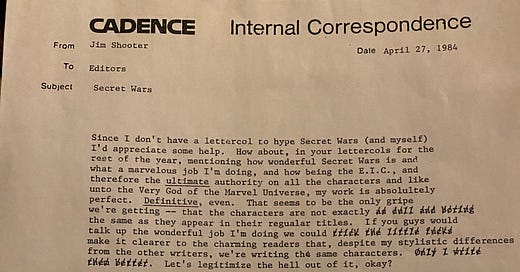



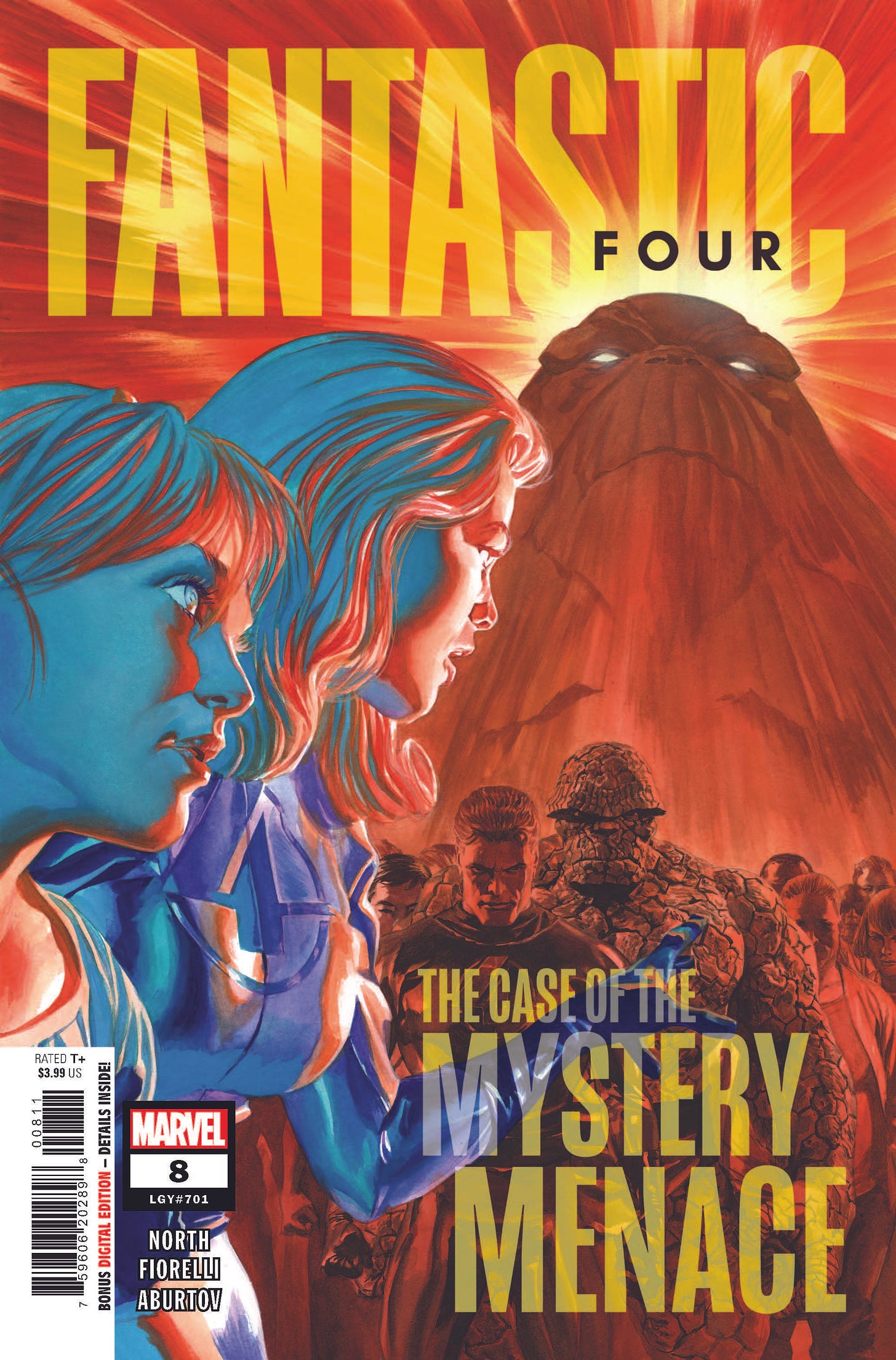
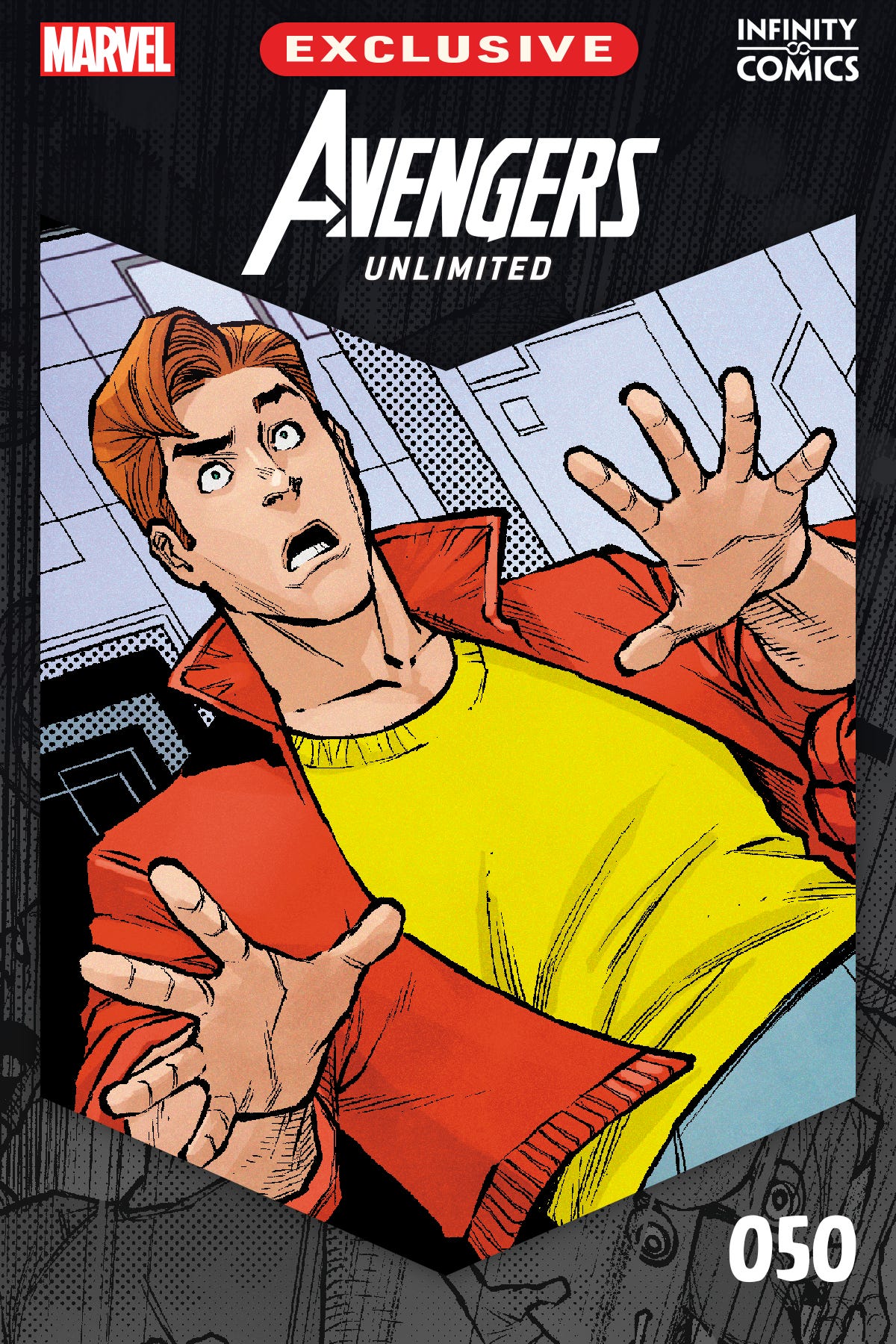

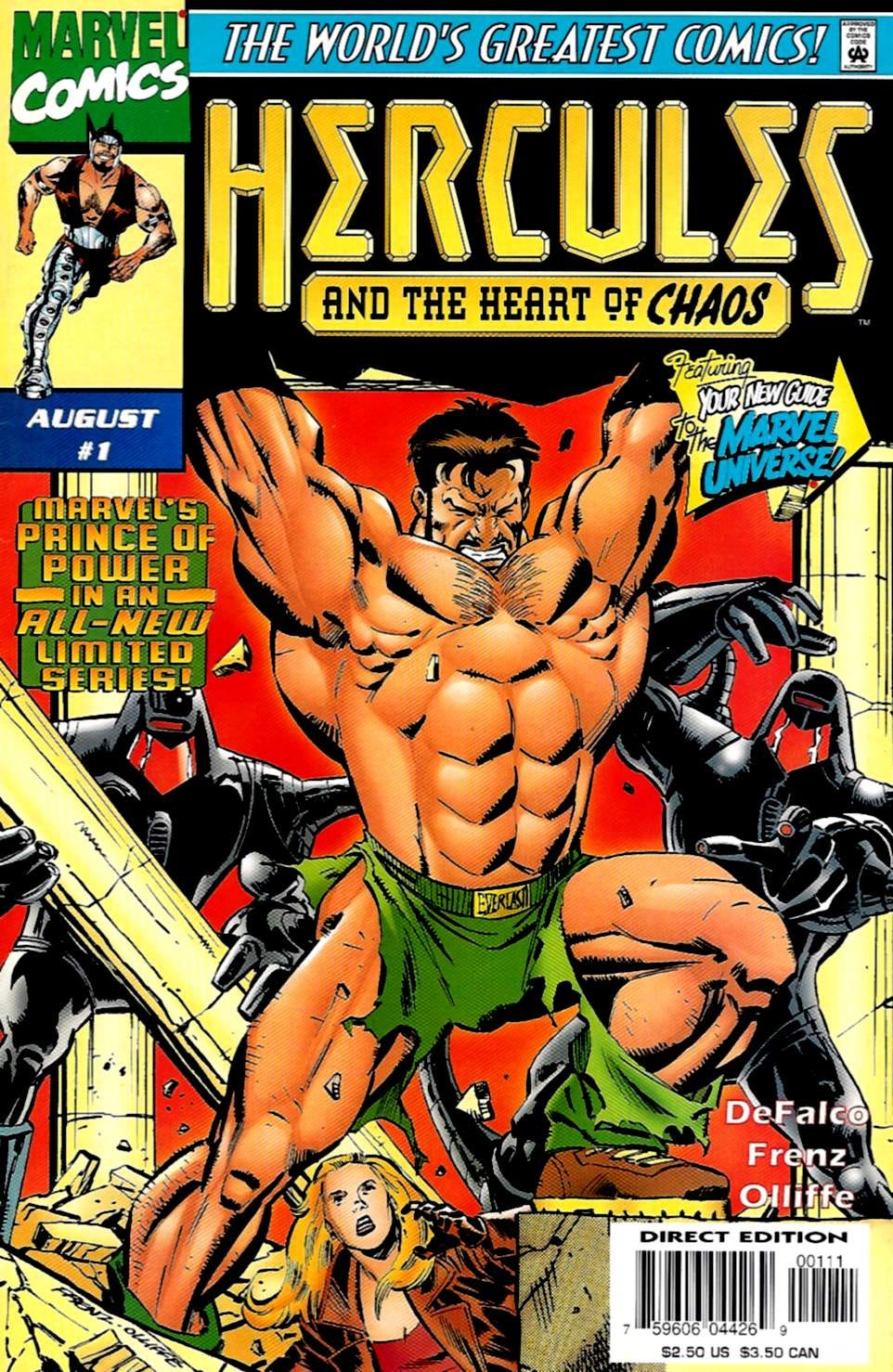
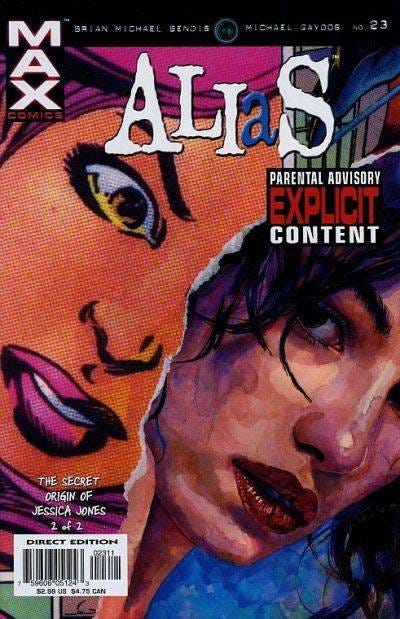
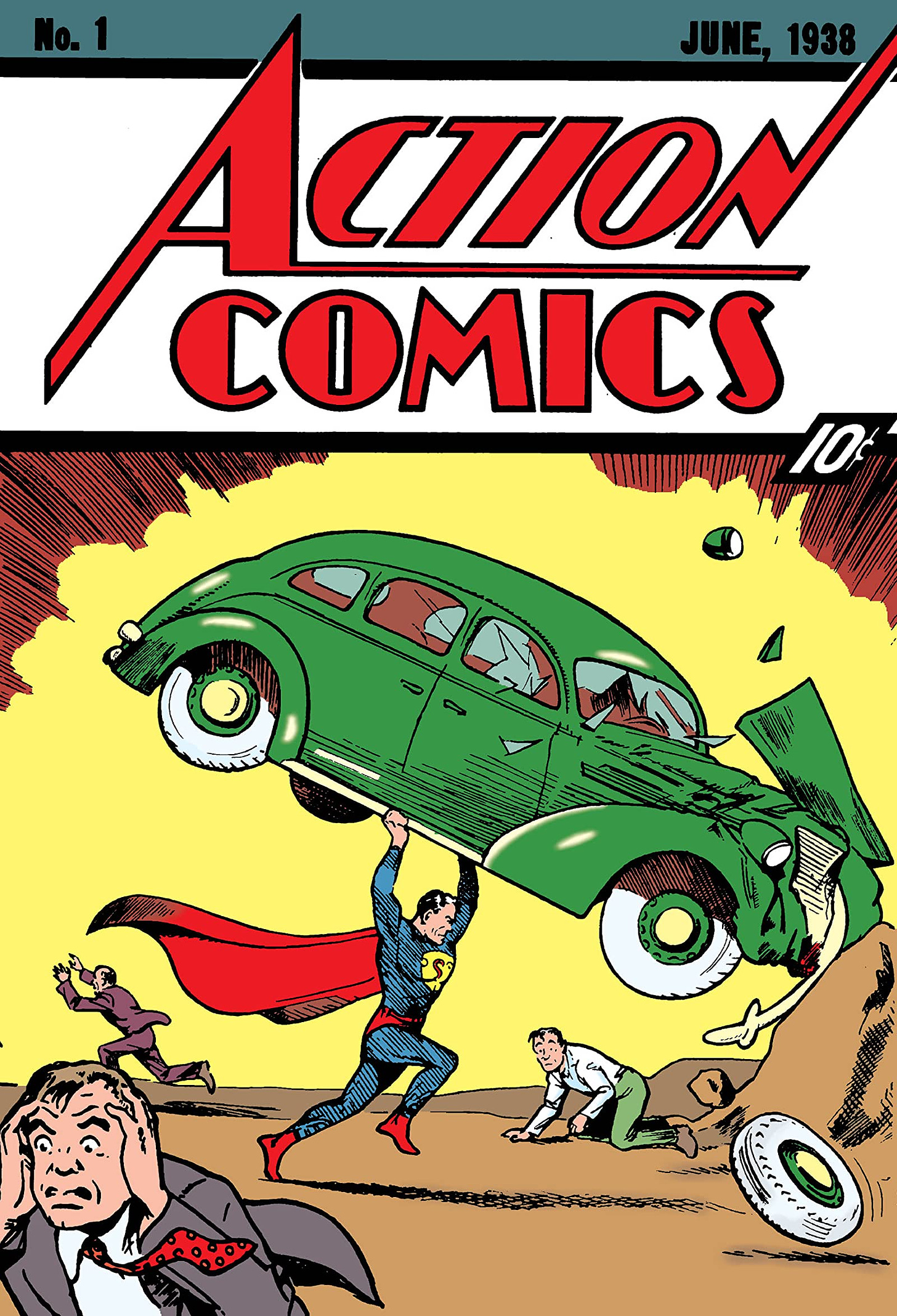
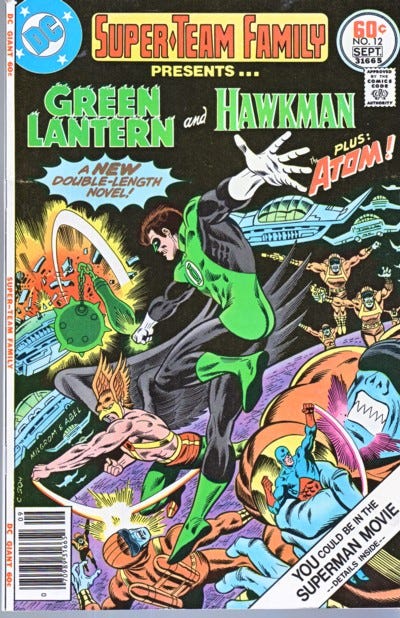
EDITING/WORKING ON A CHARACTER YOU DON'T "GET"
The bottom line is: if you want to work in this industry, at times you're going to have to work on something that doesn't thrill you as much as other projects would, but if you want to keep working in this industry you'll find a way to connect to that project, look forward to working on it, and give it your all.
Quite honestly, I was never a big SUPERMAN fan. The core question of any SUPERMAN story, to me, is "How is he NOT going to win in 2 panels?" whereas the question for many other characters (Daredevil, Spider-man, Batman, the FF, etc.) is "How can they possibly win?" Which is a much more interesting question, if you ask me.
Still, when Mike Carlin offered me a chance to write ADVENTURES OF SUPERMAN, I knew it has a HUGE career opportunity, and I'd be a fool to walk away from it. I was extremely fortunate, because when I came on board SUPERMAN was dead and not even in the book for a number of issues, which gave me time to get a feel for things and figure out what I wanted to do. Two things became very clear, very quickly:
1) Superman had a great supporting cast— probably the best at DC. I loved the Superman/Lois interactions— the chance to show a loving, ADULT relationship— and Jimmy was always such a wonderful, fun foil. Even Perry had great grit and heart. But the best supporting character was (and still is, IMO) Lex Luthor. Which led to my big epiphany…
2) Superman deeply loves and respects humanity— stemming from the values and perspectives taught him by his parents and friends— so much so that, in his heart of hearts, he wishes he was human. A thing he will NEVER be. Lex, on the other hand, desperately wishes he was super-human, a thing HE will never be. Each has, on some level, what the other wants. Which is why they are such perfect counterpoints/adversaries for each other.
It was this realization that made SUPERMAN "click" for me. This is when I found the "hook" that made writing SUPERMAN something I could do.
I had to figure out a similar hook when Steve Wacker offered me MARVEL APES. It sounded like a joke assignment— one that NO ONE would take seriously, even/especially the fans— but at the time I needed the work, and wanted this to be something that might make people say "He made MARVEL APES good— MARVEL APES!!— think what he could do with better characters!" And while MARVEL APES didn't really lead to more assignments— there are no sure things in this business— I didn't accept the gig until I knew I could make it work FOR ME. Meaning: I could make it more than just a joke project— that it could/should have jokes and bad puns, but it also needed heart and something at stake that would keep the readers on the edge of their seat and coming back for the next issue.
(My answer to that, BTW, was to say that under the bad puns and flingin' feces jokes these characters are brutally animalistic, and a definite danger to anyone who crosses them. What I didn't know at the time was that Joe Quesada had already decided the Apes would also be vampires— which I didn't really feel the story needed, but I did see it was there for the same reason: to make these silly characters actually, frighteningly dangerous. So I could work with it.)
Of course, some times despite your best efforts, things DON'T come together or work out. A prime example of that in my career is the HUMAN TORCH series. When Tom Brevoort offered me that book, I had visions of classic Johnny and Wyatt roaming the world— or many worlds— having grand adventures, discovering hidden corners and unknown treasures. (I knew Wyatt wouldn't necessarily be involved, but that was the FEEL I was going for.) Bill Jemas, however, had other, strong, and pretty much diametrically opposed ideas about what the book should and shouldn't be. Most dumbfounding, he didn't want any other fantasy elements in the book except for the TORCH himself— a 1970's TORCH TV series, in other words— which pretty much torpedoed the book I *really* wanted to write. Still, loving the character I tried to come up with something that worked for all of us. I have never struggled more on a pitch/direction of a character in my entire career. At least once I told Tom that maybe I wasn't the guy for this book— and there have been times I wish I had walked away from it, because the end result was an unreadable mess that did nothing good for my career, and possibly hurt it.
But that was a clear example of me NOT finding a way to connect with the character— at least in the way that the company wanted— and how it hamstrung the project from the start.
Great newsletter this week - the 'comics are dying crowd' need to realize comics survived the 50s Witch hunts and congressional hearings, the 70s Dc implosion, the 90s speculator bust, Marvel's near bankruptcy, distributor wars, the pandemic printing shutdown..and more...comics are almost immortal ;)